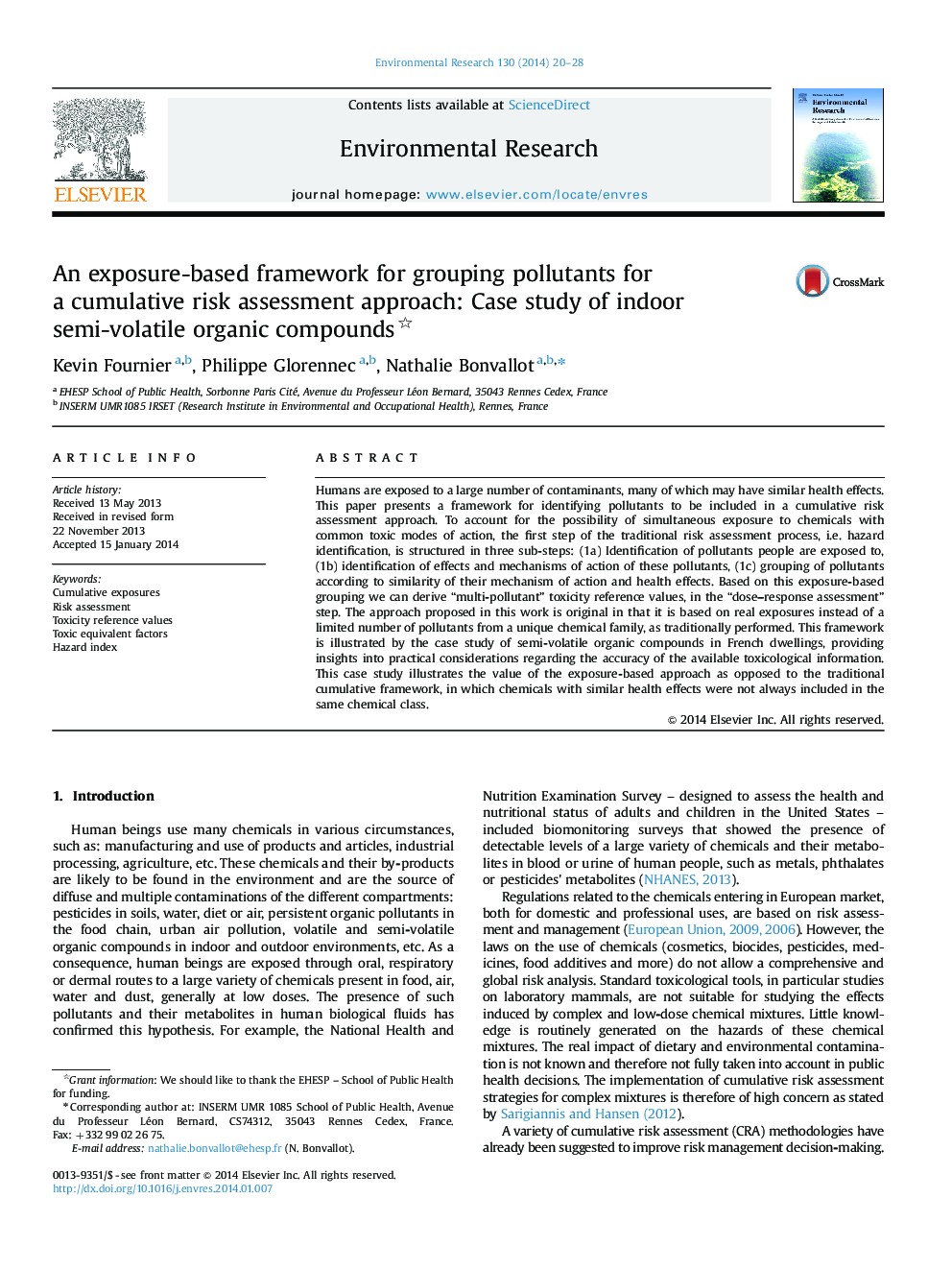| کد مقاله | کد نشریه | سال انتشار | مقاله انگلیسی | نسخه تمام متن |
|---|---|---|---|---|
| 6352808 | 1622571 | 2014 | 9 صفحه PDF | دانلود رایگان |
عنوان انگلیسی مقاله ISI
An exposure-based framework for grouping pollutants for a cumulative risk assessment approach: Case study of indoor semi-volatile organic compounds
ترجمه فارسی عنوان
یک چارچوب مبتنی بر قرار گرفتن در معرض برای گروه بندی آلاینده ها برای رویکرد ارزیابی خطر تجمعی: مطالعه موردی از ترکیبات آلی نیمه فرار داخلی
دانلود مقاله + سفارش ترجمه
دانلود مقاله ISI انگلیسی
رایگان برای ایرانیان
کلمات کلیدی
قرار گرفتن در معرض، ارزیابی ریسک، مقادیر مرجع سمی، عوامل معیوب سمی، شاخص خطر،
موضوعات مرتبط
علوم زیستی و بیوفناوری
علوم محیط زیست
بهداشت، سم شناسی و جهش زایی
چکیده انگلیسی
Humans are exposed to a large number of contaminants, many of which may have similar health effects. This paper presents a framework for identifying pollutants to be included in a cumulative risk assessment approach. To account for the possibility of simultaneous exposure to chemicals with common toxic modes of action, the first step of the traditional risk assessment process, i.e. hazard identification, is structured in three sub-steps: (1a) Identification of pollutants people are exposed to, (1b) identification of effects and mechanisms of action of these pollutants, (1c) grouping of pollutants according to similarity of their mechanism of action and health effects. Based on this exposure-based grouping we can derive “multi-pollutant” toxicity reference values, in the “dose-response assessment” step. The approach proposed in this work is original in that it is based on real exposures instead of a limited number of pollutants from a unique chemical family, as traditionally performed. This framework is illustrated by the case study of semi-volatile organic compounds in French dwellings, providing insights into practical considerations regarding the accuracy of the available toxicological information. This case study illustrates the value of the exposure-based approach as opposed to the traditional cumulative framework, in which chemicals with similar health effects were not always included in the same chemical class.
ناشر
Database: Elsevier - ScienceDirect (ساینس دایرکت)
Journal: Environmental Research - Volume 130, April 2014, Pages 20-28
Journal: Environmental Research - Volume 130, April 2014, Pages 20-28
نویسندگان
Kevin Fournier, Philippe Glorennec, Nathalie Bonvallot,
